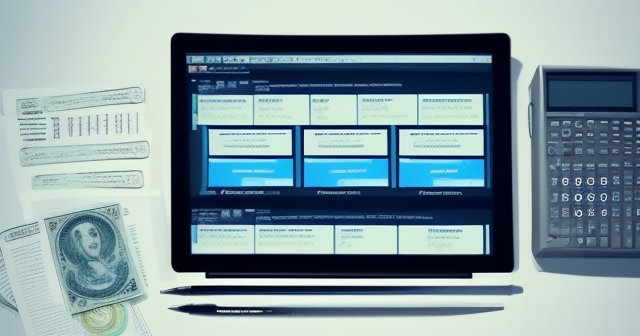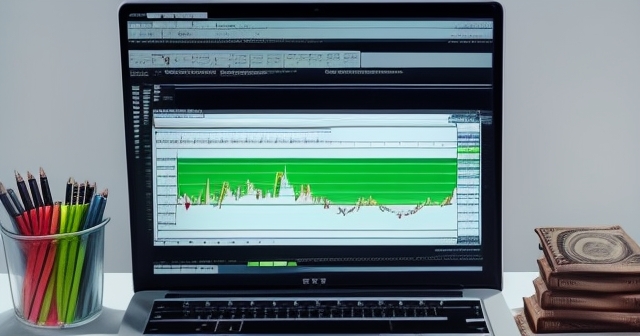The CHFJPY Pair: Navigating Safe Haven Dynamics and Technical Crossroads
Hello there, fellow traders and aspiring market navigators! Welcome to a deep dive into one of the more intriguing currency crosses: the CHFJPY pair. We often hear about major pairs like EURUSD or GBPUSD, but crosses like CHFJPY offer unique insights into global economic forces and technical patterns. As you embark on your trading journey, or seek to refine your existing strategies, understanding pairs like this can significantly broaden your perspective.
The Swiss Franc (CHF) and the Japanese Yen (JPY) are fascinating currencies in their own right. They are both often characterized as safe haven currencies, sought after by investors during times of global economic uncertainty or market turmoil. Yet, they also share a common trait: historically low, and sometimes negative, interest rates, which can position them as funding currencies in carry trades – where traders borrow low-yielding currency to buy higher-yielding ones. This dual nature makes their pairing, CHFJPY, a complex and dynamic instrument to analyze.
Over the past decade and a half, this pair has shown a remarkably consistent trend. If you’ve followed the markets, you’ve likely noticed the significant upward trajectory it has traced since hitting a notable low point in 2008. What forces have driven this sustained climb? And what does the current market landscape, particularly from a technical analysis perspective, suggest about its future path? These are the questions we will explore together, peeling back the layers to understand the performance, drivers, and potential trading signals for the CHFJPY.
Remember, the goal here isn’t just to predict the market – that’s a challenging, if not impossible, task. Instead, it’s to equip you with the knowledge and analytical tools to understand *why* the market might be behaving in certain ways and how you can interpret the signals it presents. Think of us as your guide through the intricate world of currency dynamics, helping you build a solid foundation for informed decision-making. Ready to dive in?

Understanding the Long-Term Ascent of CHFJPY Since 2008
Let’s cast our minds back to 2008. This period marked a significant turning point for many financial markets, including currency pairs. For CHFJPY, it represented a nadir, a low from which it would subsequently embark on a prolonged and powerful uptrend. This wasn’t a sudden spike but rather a steady, persistent climb that has redefined the pair’s historical context.
When we observe a trend of this magnitude and duration, stretching over more than a decade, it’s clear that powerful fundamental forces are at play. Market movements, especially long-term ones, are rarely arbitrary. They are the manifestations of underlying economic policies, global capital flows, and shifts in investor sentiment.
What, then, has been the primary engine driving the CHFJPY consistently higher since that 2008 low? While multiple factors always contribute to currency movements, a dominant theme has been the stark divergence in monetary policy between the Swiss National Bank (SNB) and the Bank of Japan (BoJ).
Specifically, the data points to aggressive Japanese monetary easing as a key catalyst. Monetary easing refers to actions taken by a central bank to stimulate the economy, typically by lowering interest rates, increasing the money supply, or purchasing assets. The Bank of Japan has been at the forefront of unconventional and extensive easing measures for decades, particularly intensifying its efforts in the aftermath of the global financial crisis and subsequent economic challenges.
Consider this: When a central bank aggressively eases policy, it generally aims to make borrowing cheaper and make the domestic currency less attractive to hold relative to others where rates might be higher or expected to rise. This can lead to capital flowing out of the easing country and can put downward pressure on its currency’s value. The BoJ’s persistent easing, often more aggressive and longer-lasting than that of other major central banks, has tended to weigh on the Japanese Yen.
Meanwhile, while the SNB has also employed easing measures, including negative interest rates at times, the *relative* stance and the *cumulative* impact of the BoJ’s actions have often created a differential that favors the Swiss Franc against the Yen over the long haul. It’s not just about *what* the central banks are doing, but *how much* and *for how long* relative to each other. This ongoing narrative of monetary policy divergence has been a fundamental bedrock supporting the bullish trend in CHFJPY.
| Year | CHFJPY Performance |
|---|---|
| 2008 | Notable low point |
| 2010 | Initial recovery begins |
| 2015 | Significant upward trend |
| 2020 | Continued bullish momentum |
The Dual Identity: CHF and JPY as Safe Havens and Funding Currencies
Let’s delve deeper into another fascinating aspect of these two currencies: their reputation as both safe havens and funding currencies. It might seem counterintuitive at first – how can a currency be sought after in times of fear (safe haven) and also be used to fund risky investments (funding currency)? The answer lies in their specific characteristics, particularly their interest rate profiles.
Firstly, the safe haven status. Both the Swiss Franc and the Japanese Yen have earned this reputation over time due to several factors. Switzerland is known for its political stability, sound financial system, and historically low inflation. Japan, despite its economic challenges, is a major creditor nation with a strong domestic savings base and large foreign exchange reserves. During periods of global stress – be it geopolitical tensions, financial crises, or widespread market volatility – investors often seek refuge in assets perceived as stable and secure. The CHF and JPY frequently benefit from these ‘flight-to-safety’ flows, as investors move capital out of riskier assets or regions.
However, their persistent tendency towards low interest rates also grants them the role of funding currencies. In the world of finance, a funding currency is one that is borrowed cheaply to invest in assets denominated in currencies with higher interest rates or expected to appreciate. This strategy is known as a ‘carry trade.’ For much of the past few decades, borrowing in JPY or CHF (especially JPY, given its extremely low rates for a prolonged period) has been inexpensive. This has made them attractive currencies to sell when executing a carry trade, using the proceeds to buy currencies from countries with significantly higher interest rates (like the Australian Dollar, New Zealand Dollar, or emerging market currencies at various times).
So, how does this dual nature influence the CHFJPY pair? When global risk sentiment is positive and carry trades are popular, the JPY can weaken more significantly than the CHF, contributing to an upward move in CHFJPY. Conversely, during risk-off periods, both currencies *might* appreciate due to safe haven flows, but their relative strength depends on the specific nature of the crisis and where capital is flowing. Sometimes, the unwinding of JPY-funded carry trades during sharp risk aversion can lead to a *strong* surge in JPY as borrowed funds are repaid, causing CHFJPY to fall sharply. However, the persistent difference in the *aggressiveness* of monetary easing, as discussed earlier, has been the more dominant long-term force, often overshadowing these shorter-term risk-on/risk-off dynamics.
Understanding these fundamental roles helps us see the bigger picture behind the price movements we observe on the chart. It’s a constant interplay between macroeconomic forces, central bank actions, and global investor behavior.

Analyzing the Current Market Context and Recent Technical Signals
While the long-term trend of CHFJPY since 2008 is undeniably bullish, currency markets are dynamic, and trends are punctuated by periods of consolidation or correction. Now, let’s shift our focus to the more recent picture. What has the pair been doing lately, and what are the charts telling us?
Based on recent market commentary and analysis, several technical observations suggest that the CHFJPY might be entering a phase where the long-term bullish momentum is being tested, or at least pausing. Analysts often point to specific technical indicators and price levels to gauge the market’s current sentiment and potential next moves.
One frequently mentioned signal is that the pair may have entered overbought territory. This term, common in technical analysis, suggests that the price has risen too steeply and too quickly, potentially indicating that buyers may be exhausted and a pullback or correction is becoming more likely. Indicators like the Relative Strength Index (RSI) are often used to identify overbought conditions, typically when the indicator crosses above a certain threshold (e.g., 70).
Another key technical hurdle the pair has reportedly faced is a significant resistance line. Resistance is a price level where selling pressure is expected to overcome buying pressure, potentially causing the price to reverse or at least pause its upward advance. This resistance could be based on historical price highs, trendlines, or psychological levels. A failure to break convincingly above such resistance suggests that the path of least resistance, at least in the short term, might be downwards.
Reports also indicate that the pair has shown potential ‘failure’ to break key levels. In technical analysis, the inability of price to sustain a move beyond a critical support or resistance level, or above a previous high, can be a strong signal. If buyers try to push the price higher but are repeatedly met with strong selling interest at or near a specific level, it suggests that this level is currently acting as a formidable barrier.
These technical signals – overbought conditions, encountering significant resistance, and failure to breach key levels – often appear in combination and can collectively build a case for a potential near-term reversal or a period of consolidation after a strong upward move. It’s like the price hitting a ceiling; it might bounce around under that ceiling for a while, or it might fall back down.
| Technical Indicator | Description |
|---|---|
| Relative Strength Index (RSI) | Measures the speed and change of price movements, indicating overbought or oversold conditions. |
| Resistance Level | A price level where selling pressure may overcome buying pressure, potentially causing a price reversal. |
| Failure to Break | Inability to sustain a move beyond critical support/resistance, indicating potential market weakness. |
Exploring Specific Bearish Technical Patterns in CHFJPY
Beyond general indicators like ‘overbought,’ technical analysts often look for specific chart patterns that can provide clues about potential future price movements. These patterns are essentially visual representations of the ongoing battle between buyers and sellers, and experienced traders interpret them based on how similar battles resolved in the past.
Based on the analysis available, several technical patterns have been cited for the CHFJPY pair, many of which lean towards a potential bearish outlook, suggesting possibilities for a move down or a significant pullback. Let’s unpack some of these patterns:
-
The Double Top Pattern: This is a classic bearish reversal pattern formed after an extended uptrend. It consists of two consecutive peaks of roughly equal height with a trough between them. The ‘neckline’ is a support level drawn at the lowest point of the trough. A confirmed double top occurs when the price breaks below the neckline after forming the second peak. This pattern suggests that the buying pressure that drove the price up initially failed to sustain a higher high on the second attempt, indicating weakness and a potential trend reversal downwards.
-
The Wedge Pattern: Wedge patterns are convergence patterns where two trendlines, one connecting successive highs and the other connecting successive lows, move closer together. A *rising wedge* forms during an uptrend (or sometimes a downtrend correction) with both lines sloping upwards. This pattern is often considered bearish, suggesting that the upward momentum is weakening as the price makes higher highs and higher lows, but the *rate* of making those highs and lows is slowing down. A break below the lower trendline confirms the pattern and signals a potential move down.
-
The Ending Diagonal Pattern: This is a more advanced pattern, often associated with Elliott Wave theory. An ending diagonal is a special type of wedge pattern that typically occurs at the end of a larger trend, specifically in the fifth wave of an impulse or a ‘C’ wave of a correction. It is characterized by overlapping waves and usually forms within two converging trendlines. Unlike a standard impulse wave, the internal structure of each leg within the diagonal is often three-wave (e.g., ABC) rather than five-wave. The significance of an ending diagonal is that it signals the *exhaustion* of the preceding trend and strongly suggests an impending sharp reversal in the opposite direction.
When analysts identify these patterns in the CHFJPY chart, they are interpreting them as potential signals that the long-term bullish trend might be pausing or even reversing in the near term. The double top suggests failure at a high, the rising wedge indicates weakening momentum, and the ending diagonal points to the potential completion of a major upward cycle. These patterns provide specific targets and invalidation levels for traders looking to capitalize on potential downward movements.

Synthesizing Divergent Trading Ideas and Market Sentiment
Based on the technical analysis we’ve discussed, it’s clear that there’s a prevalent sentiment suggesting the potential for a downward move or pullback in CHFJPY. Market analysis often compiles various trading ideas that reflect this sentiment, but it’s important to understand that these ideas aren’t monolithic; they can come from different perspectives and use slightly different triggers or targets.
What we often see in aggregate analysis is a range of trading ideas, many of which align with the bearish technical signals. For instance, you might find ideas suggesting:
- Entering a ‘short’ position (selling the pair with the expectation of buying it back at a lower price) based on the confirmation of a double top pattern (i.e., the break below the neckline).
- Looking for short opportunities if the price breaks below the lower trendline of a rising wedge pattern.
- Considering a sell-off possibility upon the completion of an identified ending diagonal pattern, anticipating a sharp reversal.
- Placing stop-loss orders strategically above key resistance levels or the recent swing highs to manage risk on these short positions.
- Identifying potential target levels for a downward move, based on pattern measurements (like the height of the double top projected from the neckline) or significant support levels on the chart.
The emphasis on ‘short’ opportunities or ‘move down’ and ‘pullback’ reinforces the idea that, while the long-term trend has been bullish, the recent technical landscape is prompting many analysts to look for potential corrections or reversals. It’s a testament to how traders constantly evaluate the market, not just based on historical trends but also on the most recent price action and pattern formation.
However, it’s crucial to remember that these are *ideas* and *analyses*, not guarantees. The market can always surprise. While many analyses may lean bearish in the short term, others might still hold a long-term bullish conviction, viewing any potential dip as a buying opportunity within the larger trend. Some analyses might also present alternative scenarios – what happens if resistance *does* break? This is why looking at a variety of sources, like those from platforms or providers such as OANDA, TradingView, Reuters, FXStreet, FX Empire, and others (like BKTradingAcademy, EliteTradingSignals, ForexMasters2000, etc., as seen in the data), gives you a more complete picture of the prevailing sentiment but also potential counter-arguments.
Combining Fundamental and Technical Perspectives on CHFJPY
You might wonder, how do fundamental drivers like monetary policy easing and safe haven flows interact with technical patterns like double tops and wedges? The most effective approach to market analysis for many successful traders involves combining both perspectives. Fundamentals often explain the ‘why’ behind the long-term trend, while technicals help identify the ‘when’ and ‘where’ for potential entry and exit points or trend reversals.
Consider the long-term bullish trend of CHFJPY since 2008, largely attributed to aggressive Japanese monetary easing. This fundamental narrative provided the powerful tailwind. Technical analysis, over this long period, would have shown consistent patterns of bullish continuation – upward trending channels, flag patterns, breakouts from consolidation ranges, and so forth. Technicals would have helped traders ride that trend, identifying points to add to positions or manage risk during pullbacks.
Now, consider the current situation. While the fundamental drivers of Japanese easing haven’t necessarily reversed entirely, the *pace* or *expectations* surrounding them might be shifting, or perhaps the sheer magnitude of the long-term move makes the pair technically ‘stretched.’ In this context, technical patterns suggesting a potential pullback become highly relevant. A double top or an ending diagonal appearing after a massive uptrend isn’t just a random shape on the chart; it could be the market’s way of signaling that the fundamental tailwind is facing temporary headwinds, or that the move has simply run too far, too fast, regardless of underlying policy differences.
Therefore, a sophisticated trader might view the long-term fundamental picture (CHFJPY generally favors the upside due to policy divergence) as the overarching context, but use the current technical signals (overbought, resistance, bearish patterns) to look for potential short-term trading opportunities or to tighten risk management on existing long positions. A potential pullback, signaled by these technicals, could be seen as a healthy correction within the larger trend, or it could be the start of a more significant reversal if fundamental conditions begin to shift more dramatically.
This synergy between fundamental and technical analysis allows for a more robust understanding of the market. It helps you see both the forest (long-term trend and drivers) and the trees (short-term price action and patterns).
If you’re just starting to explore the world of forex trading and looking for a platform to apply these analytical skills, understanding the tools available is key. When considering which broker to use, look for one that provides robust charting tools and access to various trading platforms. If you’re considering starting to trade forex or exploring more CFD instruments, then Moneta Markets is a platform worth considering. It originates from Australia and offers over 1000 financial instruments, suitable for both beginners and professional traders.
The Inherent Risks of Trading CHFJPY and Leveraged Forex
Now, let’s turn our attention to an absolutely critical aspect of trading any financial instrument, especially currency pairs on margin: risk. It cannot be stressed enough that trading foreign exchange on margin carries a high level of risk.
What does ‘trading on margin’ mean? It means you are using leverage. Leverage allows you to control a large position in the market with a relatively small amount of capital (your margin). For example, 100:1 leverage means you can control $100,000 worth of currency with only $1,000 of your own money. This magnifies potential profits, but it *equally* magnifies potential losses.
Consider our CHFJPY example. If you enter a position based on a technical pattern suggesting a downward move, and the market moves against you (i.e., the price goes up instead of down), your losses can accumulate very quickly, potentially exceeding your initial deposit. This is the fundamental danger of leverage. A small percentage move in the market can translate into a large percentage gain or loss on your capital.
Furthermore, currency markets can be influenced by sudden, unexpected events – geopolitical shocks, unexpected central bank announcements, major economic data releases – that can cause rapid and significant price swings. Even if your analysis of CHFJPY seems sound, an unforeseen global event could send the pair in the opposite direction almost instantly.
This high level of risk means that trading forex is not suitable for all investors. You should never trade with money you cannot afford to lose. It requires a thorough understanding of how leverage works, the factors that move currency prices, and, crucially, robust risk management strategies.
Before you even consider placing a trade on CHFJPY or any other pair, you must fully understand these risks. Ask yourself:
- Do I understand how leverage works and its impact on potential gains and losses?
- Do I have a risk management plan (e.g., using stop-loss orders) for every trade?
- Can I afford to lose the capital I am risking?
- Have I done my own research and analysis, or am I solely relying on others’ ideas?
Recognizing and respecting the inherent risks is the first step towards becoming a responsible trader. Any analysis or trading idea you encounter, including those discussed here for CHFJPY, should always be viewed through the lens of risk management.
Why This Content is Educational, Not Investment Advice
It is paramount to reiterate that the information and analysis presented here, derived from market data and commentary on the CHFJPY pair, are strictly for educational and research purposes. This content does not constitute investment advice.
Think of it this way: We are like teachers explaining concepts, historical context, and common analytical tools. We are showing you *how* market participants analyze the CHFJPY pair, *what* technical patterns they look for, and *what* fundamental factors they consider. We are discussing *ideas* that are circulating in the market based on available data.
However, providing investment advice would involve telling you *exactly* what to buy or sell, *when* to do it, and *how much* to risk, tailored specifically to your individual financial situation, risk tolerance, and investment objectives. That requires a licensed financial advisor who understands your personal circumstances.
The analysis of CHFJPY reaching overbought territory, encountering resistance, or forming patterns like double tops or wedges represents *interpretations* of market data. These interpretations are subjective and can be incorrect. Different analysts may look at the same chart or economic data and come to completely different conclusions. Market conditions can change rapidly, rendering previous analyses obsolete.
Therefore, any reliance you place on the information provided here for the purpose of making actual trading decisions is done so entirely at your own risk. Trading based solely on generalized information or others’ analyses without conducting your own thorough research and implementing a robust risk management plan can lead to significant financial losses.
Our mission, as a knowledge-focused brand, is to empower you with understanding, not to make trading decisions for you. We aim to help you grasp the complexity of financial markets and the tools used to analyze them, so that *you* can develop your own informed perspectives and strategies. Use this information as a starting point for your own research, combine it with your own analysis, and always, always trade with caution and a clear understanding of the risks involved.
When you are ready to put your knowledge into practice, choosing the right platform is crucial. If you are looking for a broker with strong regulatory backing and global reach, Moneta Markets is worth considering. It holds multiple international regulatory certifications, including FSCA, ASIC, and FSA, and offers features like segregated client funds and 24/7 customer support, providing a comprehensive package for many traders.
Developing Your Own Analytical Approach for CHFJPY
Given the complexity and the inherent risks, how can you approach analyzing the CHFJPY pair effectively? It involves developing your own systematic approach, incorporating both fundamental context and technical analysis, while always prioritizing risk management.
Here are some steps you can take:
-
Understand the Fundamentals: Keep track of the monetary policy decisions and statements from the Swiss National Bank (SNB) and the Bank of Japan (BoJ). Pay attention to their inflation targets, economic outlooks, and any hints about future policy changes. Understand how global risk sentiment is influencing safe haven flows towards or away from CHF and JPY. Monitor key economic data releases from both Switzerland and Japan.
-
Master Technical Analysis: Learn to identify trendlines, support and resistance levels, and key chart patterns like the double top, wedge, and ending diagonal. Understand how to use indicators like the RSI to gauge momentum and potential overbought/oversold conditions. Practice reading charts across different timeframes (e.g., daily for long-term trend, 4-hour for structure, 1-hour for entry). There are many excellent resources available to help you learn these techniques.
-
Combine Perspectives: Don’t rely solely on one form of analysis. If the long-term fundamental picture suggests potential for continued CHF strength against JPY (due to relative policy differences), look for technical signals (like pullbacks to support, bullish continuation patterns) to find potential opportunities to trade in that direction. If, however, technicals are flashing strong bearish reversal signals (like a confirmed double top after a long rally), consider whether there are any subtle fundamental shifts that could support this, or simply acknowledge that the market may be due for a technical correction regardless of minor fundamental changes. Use technicals for timing and risk management within your broader fundamental view.
-
Practice on a Demo Account: Before risking real capital, practice trading CHFJPY (and other pairs) on a demo account. This allows you to test your analytical approach, experiment with different strategies, and get comfortable with the trading platform and order execution without financial risk. It’s an invaluable step for both beginners and those testing new methods.
-
Prioritize Risk Management: For every potential trade idea on CHFJPY, define your maximum acceptable loss *before* entering the trade. Use stop-loss orders to automatically close your position if the price moves against you beyond a certain point. Determine appropriate position sizes based on your total capital and your risk tolerance for that specific trade. Never risk a large percentage of your total trading capital on a single trade.
Developing this systematic approach takes time, practice, and continuous learning. There will be winning trades and losing trades. The key is to learn from both, refine your process, and stay disciplined, especially with risk management.
Navigating Potential Scenarios: Pullback vs. Reversal
Given the technical signals pointing towards a potential move down or pullback in CHFJPY, it’s helpful to consider what this might mean in the context of the long-term trend. Is this likely to be a temporary correction within the ongoing bullish trend, or could it be the beginning of a more significant trend reversal?
Distinguishing between a pullback and a reversal is a common challenge in trading. A pullback (or correction) is a temporary dip or movement against the dominant trend before the trend resumes. A reversal is a more significant shift where the old trend ends and a new trend begins in the opposite direction.
Based on the data we’ve analyzed, the current technical setup in CHFJPY seems to lean towards the possibility of a *pullback*. Signals like being ‘overbought’ or hitting ‘resistance’ often lead to corrections. Patterns like wedges or double tops can indicate reversals, but their significance depends heavily on the timeframe and the strength of the preceding trend. In the context of a powerful, multi-year uptrend driven by significant fundamental divergence (BoJ easing), a technical correction might be more likely than a complete reversal, unless there are strong fundamental catalysts for a major shift (e.g., a sudden, dramatic change in BoJ or SNB policy).
However, we must remain open to the possibility of a reversal. If the downward move gains momentum, breaks through significant long-term support levels, and is accompanied by a shift in fundamental factors (perhaps global risk sentiment fundamentally changes, or the BoJ signals a significant policy tightening), then what started as a potential pullback could evolve into a reversal. Traders often look for confirmation of a reversal through breaking key support levels, forming new bearish patterns, or seeing a change in the character of price action (e.g., sharp moves down, shallow pullbacks up).
For you as a trader, this means being prepared for either scenario. If you are trading the potential short-term pullback, have clear targets and stop-losses. If the price action or fundamentals start to suggest a more significant reversal is underway, you might adjust your strategy, but always confirm signals rather than anticipating them based solely on potential patterns.
Understanding these potential scenarios reinforces the need for flexibility and constant re-evaluation of the market. What the charts and economic data tell us today might be different tomorrow.

The Importance of Data Sources and Market Commentary
As we’ve discussed the analysis of CHFJPY, referencing terms and ideas that likely originate from financial news services, analysis platforms, and trading signal providers is crucial. Sources like TradingView, OANDA, Reuters, FXStreet, FX Empire, and various trading academies or signal services are places where traders and analysts share their perspectives.
Accessing information from reputable sources is a vital part of your research process. These platforms and providers offer:
- Real-time Data: Access to current price quotes, charts, and market news.
- Analytical Tools: Charting software, technical indicators, drawing tools to perform your own analysis.
- Market Commentary: Written or video analysis from professionals, offering their interpretations of market movements and potential setups.
- Trading Ideas: Specific examples of how analysts are applying technical or fundamental analysis to identify potential trading opportunities (like the bearish ideas for CHFJPY we discussed).
- Economic Calendars: Information on upcoming economic data releases and central bank meetings that can influence currency pairs like CHFJPY.
Utilizing these resources can significantly enhance your understanding. However, remember the earlier point about investment advice. While these sources provide valuable data and insights, the analysis presented is just that – analysis. It reflects the view of the specific analyst or contributor and should not be blindly followed.
Use these platforms to:
- Get ideas for patterns or levels to watch in CHFJPY.
- See how different analysts interpret the same situation.
- Access the tools needed to perform your *own* technical analysis.
- Stay informed about relevant fundamental news for CHF and JPY.
Develop a critical eye. Ask questions about the analysis: What is the basis for this conclusion? What are the risks? What would invalidate this idea? This is where the EEAT principle comes into play – consider the expertise and authority of the source, but apply your own critical thinking.
To effectively use these resources and execute trades based on your analysis, you need a reliable trading platform. In choosing a platform, aspects like the range of instruments, available trading software, execution speed, and cost structure (spreads/commissions) are important. In choosing your trading platform, the flexibility and technological advantages of Moneta Markets are worth noting. It supports popular platforms like MT4, MT5, and Pro Trader, combining high-speed execution with competitive spreads, offering a solid trading experience.
Conclusion: Navigating CHFJPY with Knowledge and Caution
We’ve journeyed through the fascinating world of the CHFJPY currency pair, exploring its historical ascent driven by fundamental forces like aggressive Japanese monetary easing, understanding the unique safe haven and funding characteristics of the Swiss Franc and the Japanese Yen, and diving into the current technical landscape that suggests the potential for a near-term pullback or move down.
The long-term trend since 2008 has been strongly bullish, a testament to powerful and persistent macroeconomic dynamics. However, recent technical signals – overbought conditions, encountering resistance, and the potential formation of bearish patterns like double tops, wedges, and ending diagonals – indicate that this upward momentum may be pausing or correcting in the short term. These technical signals are prompting many market analysts to look for potential short-selling opportunities.
As you approach trading the CHFJPY, or any other market, remember the key takeaways:
- Understand the fundamental drivers (monetary policy, safe haven flows) that influence the pair’s long-term direction.
- Utilize technical analysis to identify potential entry points, exit points, and reversal signals in the short to medium term.
- Always combine your fundamental and technical analysis for a more comprehensive view.
- Be acutely aware of the high risks associated with trading foreign exchange on margin. Leverage can magnify both profits and losses.
- This content is for educational purposes only and is not investment advice. Conduct your own thorough research and analysis.
- Prioritize robust risk management in every trade you take. Use tools like stop-losses and manage your position size carefully.
- Choose a reliable trading platform that meets your needs and offers the tools and regulatory security necessary for effective trading.
Trading financial markets is a continuous learning process. By combining knowledge of fundamental factors, proficiency in technical analysis, and unwavering discipline in risk management, you can navigate complex pairs like CHFJPY with greater confidence and a clearer understanding of the forces at play. Approach the market like a sage – with a thirst for knowledge, a systematic process, and the wisdom to respect its inherent uncertainties and risks. Good luck on your trading path!

chfjpy newsFAQ
Q:What is CHFJPY and why is it significant?
A:CHFJPY is a currency pair representing the exchange rate between the Swiss Franc and the Japanese Yen, highlighting economic relations and market sentiment towards both currencies.
Q:What are the main factors affecting CHFJPY?
A:The main factors include monetary policy decisions by the Swiss National Bank and Bank of Japan, global economic trends, and investor risk appetite.
Q:How can I analyze CHFJPY effectively?
A:To analyze CHFJPY effectively, combine both fundamental analysis (economic indicators, monetary policies) with technical analysis (chart patterns, indicators).
